
Most everyone loves a good strawberry. These sweet-as-can-be, red-fleshed fruits are as sumptuous eaten out of hand as they are prepped into a smorgasbord of yummy recipes.
There are hundreds of varieties of strawberry grown across the globe today, including striking new cultivars like the yellow strawberry and the strasberry.
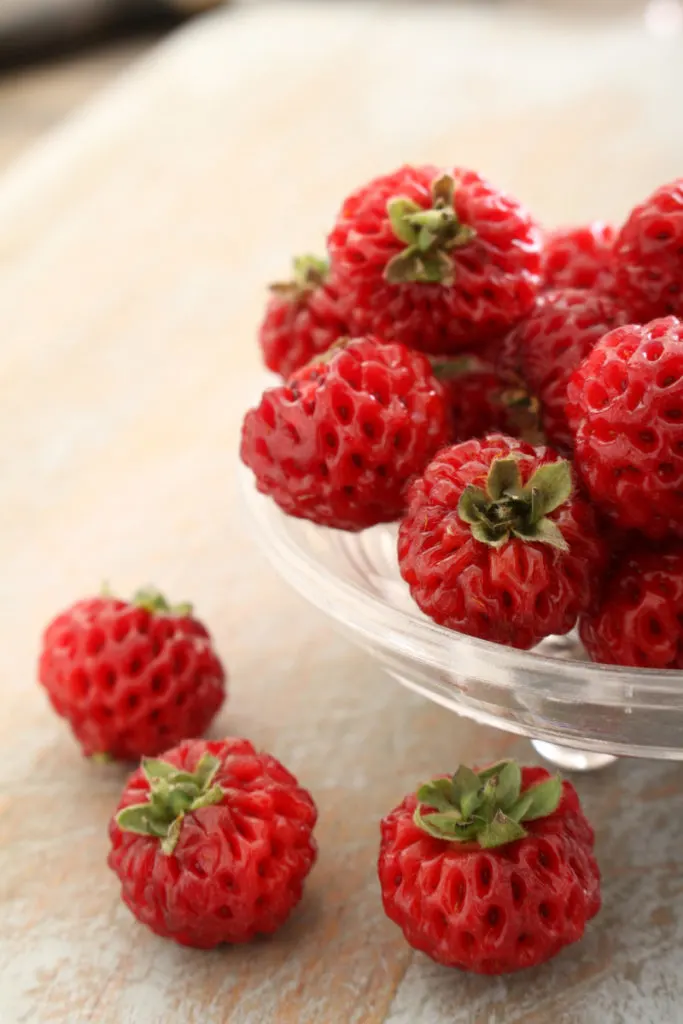
The white strawberry – known as pineberry – is another attention-grabbing one.
Pineberries ripen to a creamy white and are dotted with teeny red seeds.
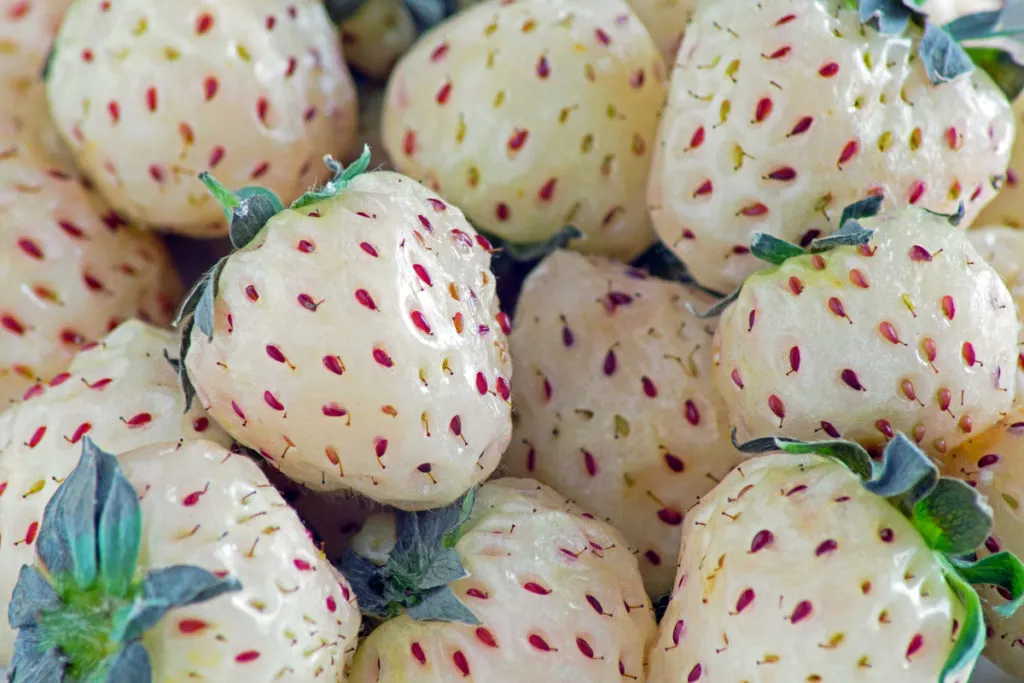
Though smaller than garden-variety strawberries, pineberries pack a lot of flavor into their modest size.
Pineberries are sweet with a little citrusy bite to them. The common name is a portmanteau of “pineapple” and “strawberry”.
But pineberries don’t come from pineapples – these fruits are 100% strawberry.
What is a Pineberry?
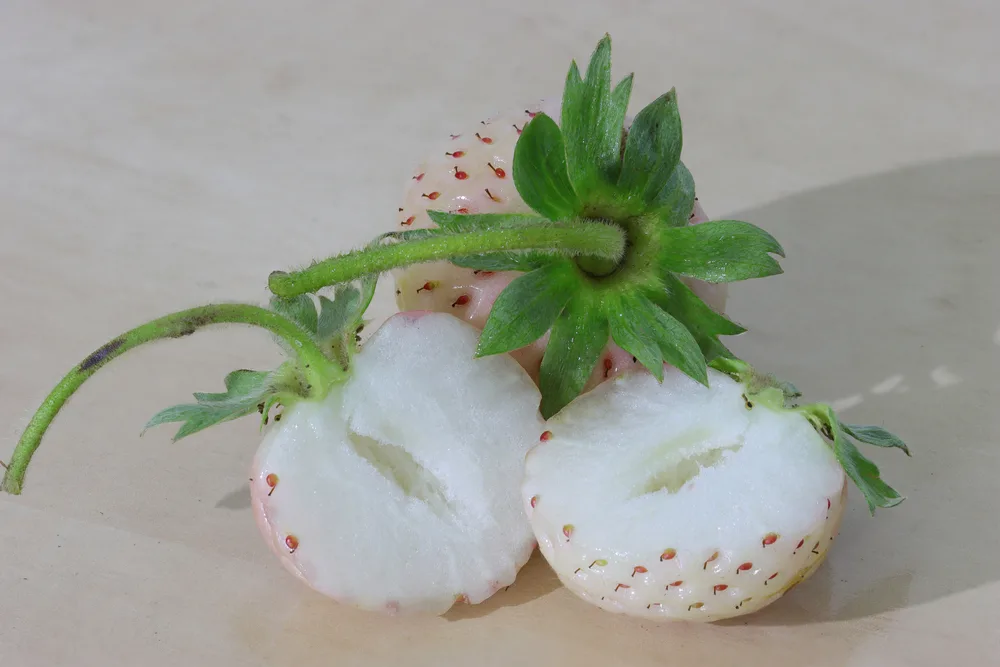
You may not realize the incredible journey strawberries have made from the wilds into our cultivated gardens. Not too long ago, strawberries as we know them didn’t even exist.
Before the discovery of the Americas, wild strawberries were grown only as ornamentals in the Old World because the fruits were tiny, tough, or lacked in flavor.
In the 1600s, the Virginia strawberry (Fragaria virginiana) was first brought back to Europe. These hardy red berries were sweet and tasty, but the fruits were quite small. Though the plant was popular in England, it was still more of a novelty than a staple fruit.
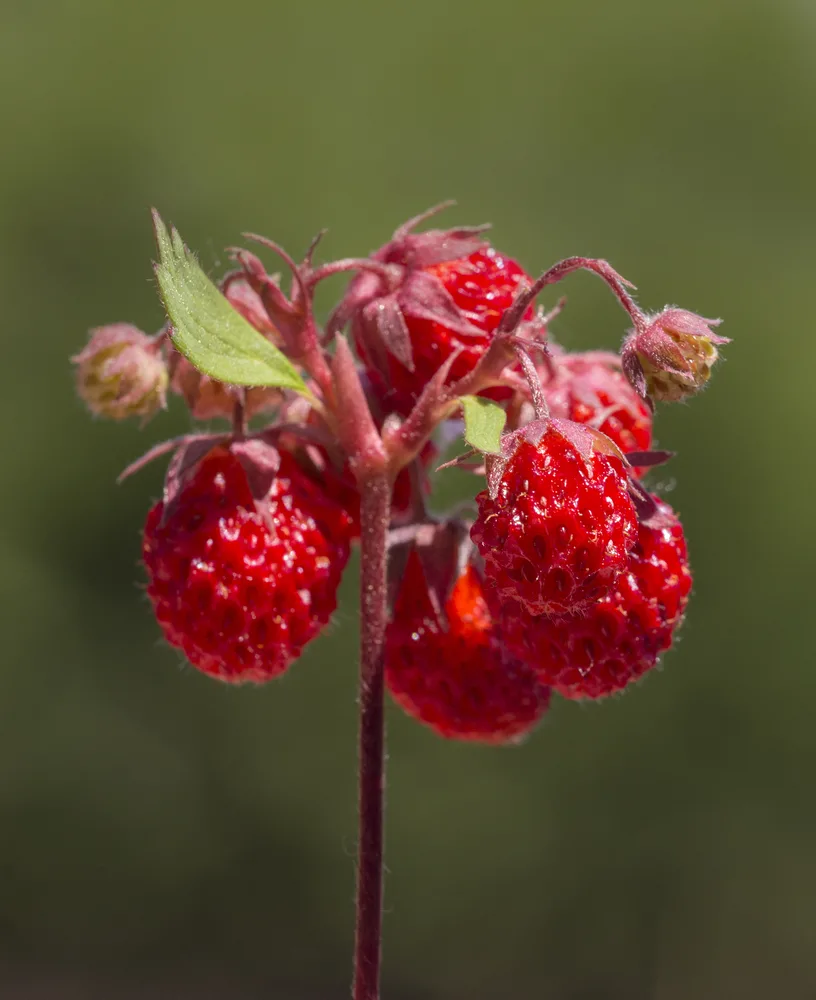
Then, in 1714, the Chilean strawberry (Fragaria chiloensis) was discovered and transported to France. The Chilean variety produced large flowers and larger, white-fleshed fruit, but were difficult to cultivate away from the mild coastal climates they were adapted to.
In a happy accident, these two New World varieties were unintentionally crossed when interplanted together, creating a natural hybrid.
The result was a much hardier plant with large and sweet berries.
The work was not finished, however. Thanks to British horticulturalists, who embarked on the long process of breeding and hybridizing the species, we have the modern genotype of the delicious scarlet fruits we enjoy today: Fragaria ananassa.
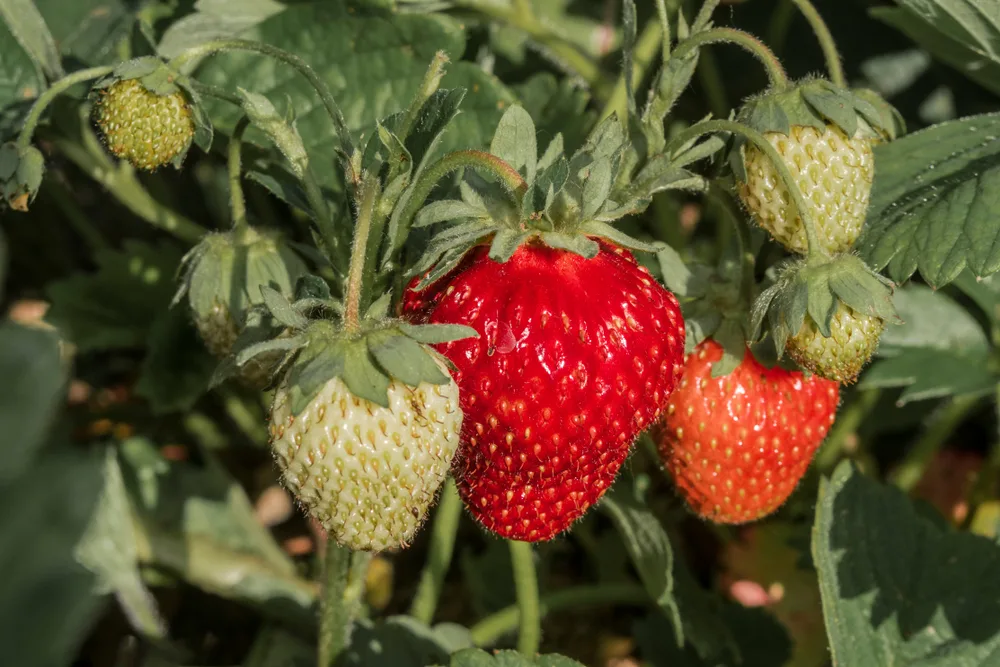
From the 20th century and onward, strawberry specialists have selectively bred plants for even more desirable traits. Things like increased productivity and yields, the ability to self-pollinate and be grown in any kind of soil, as well as disease resistance.
And that brings us to the pineberry, a relatively new entrant into the strawberry scene.
Pineberries are not genetically engineered as has been claimed by some.
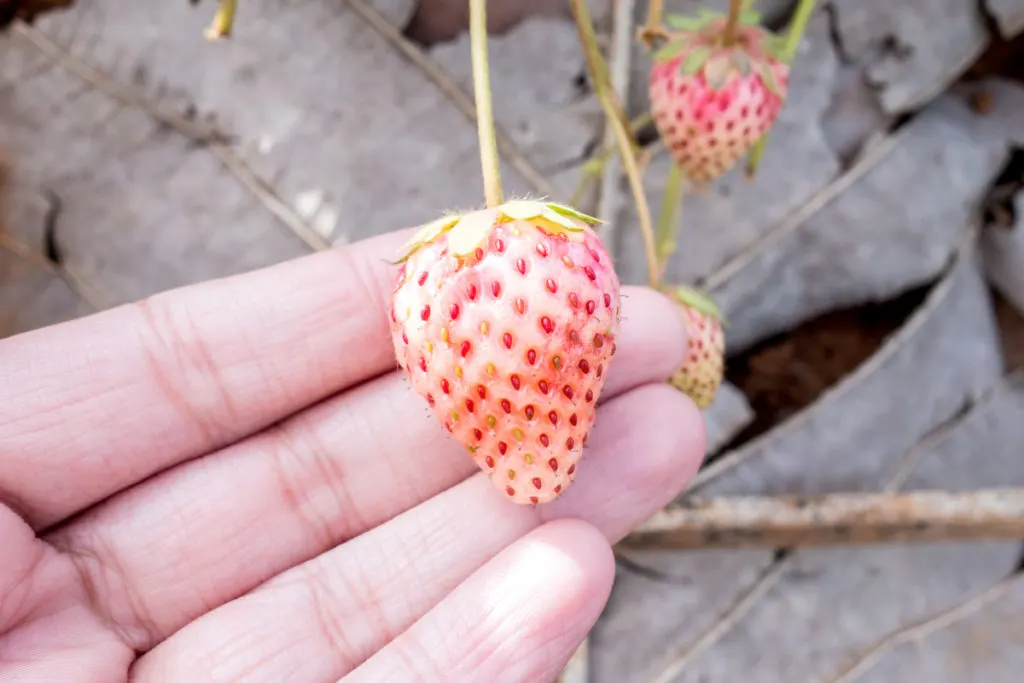
In the early days of strawberry breeding, the red-skinned fruits were selected over the white ones. To produce pineberries, Chilean and Virginia strawberries are crossed, but only plants with white berries are bred and cultured.
In the early 2000s, Dutch breeders began cultivating pineberries anew and the unusual fruits were first brought to market in the US in 2012. Still, pineberries are a rare find, only spotted in farmers’ markets and specialty produce shops.
Like cucamelons, litchi tomatoes, and other extraordinary vegetables, if you want a steady supply of pineberries, you’ll need to set aside a little land and grow them yourself.
About the Pineberry Plant…
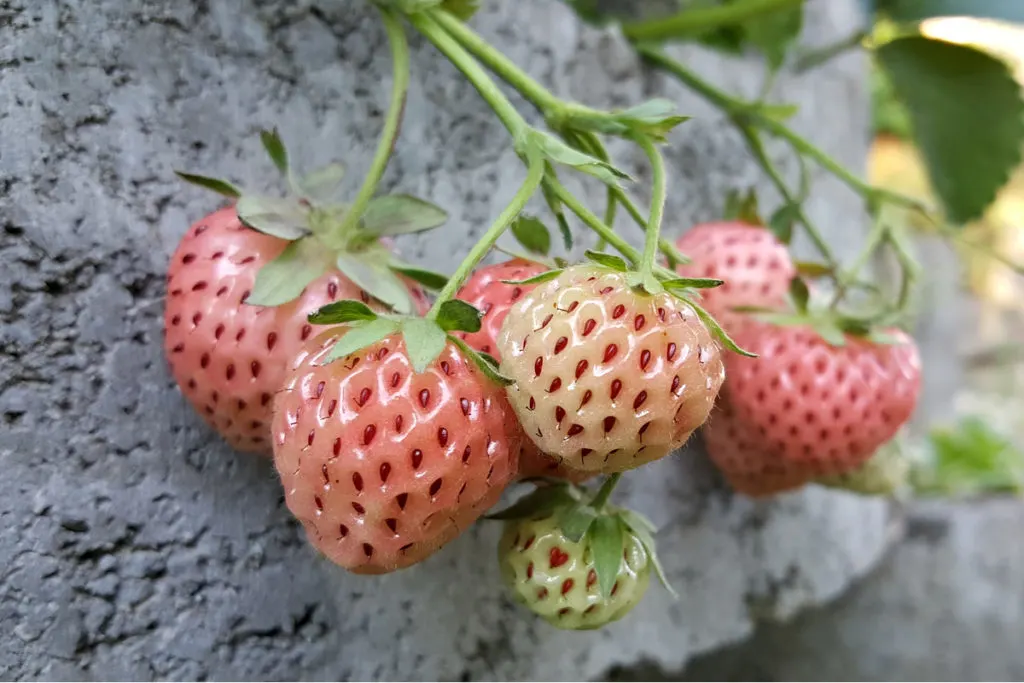
Pineberry plants have a look and habit that’s nearly identical to strawberry plants, at least at first.
Pineberries have the same toothy trifoliate leaves that form ground-hugging crowns. They intermittently send out runners that root along the soil. When in bloom, flowers are white with a yellow center.
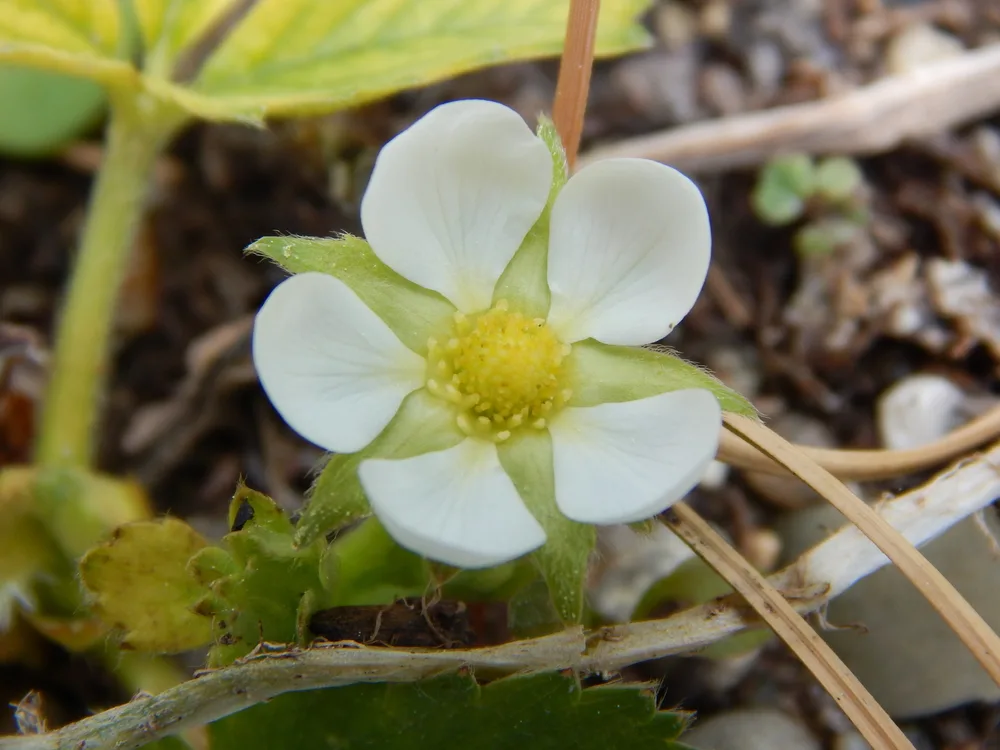
When fruits begin to set is when you can clearly see a difference. Unlike strawberries that start out green, turn white and ripen into red, pineberries begin as white berries covered in green seeds. As the berries plump up, the seeds turn red and the white flesh will have a very light pink blush to it.
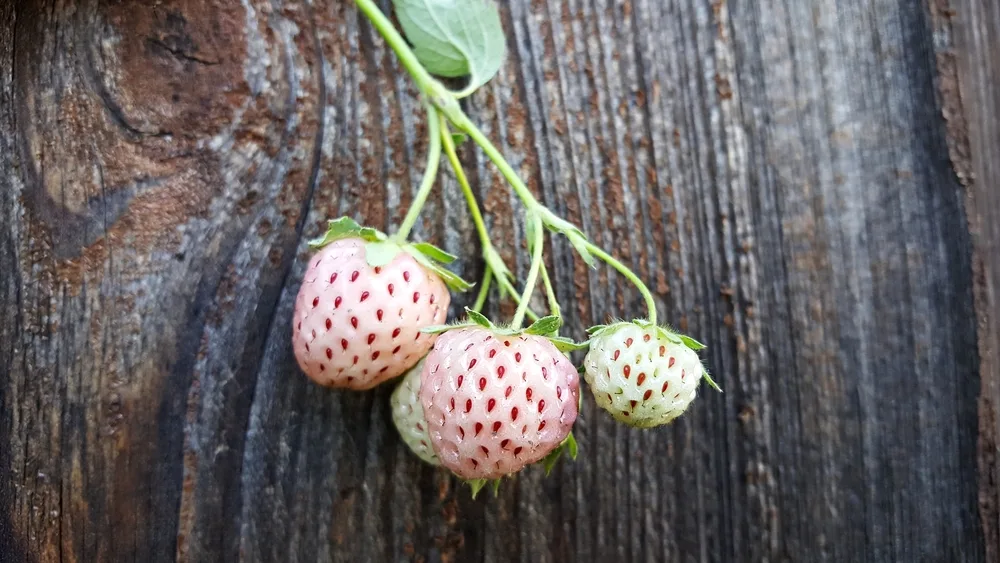
With a taste that hints of its tropical origins, the berry’s flavor is likened to pineapple with an appealing blend of sweet, tart, and citrus.
Pineberries haven’t benefited from hundreds of years of tinkering like strawberries have. Compared to strawberries, pineberry fruits are smaller – less than an inch in size – with fewer berries to pick at harvest time.
The flesh of the fruits aren’t as firm and require a delicate touch when handling them.
Pineberry Growing Conditions:
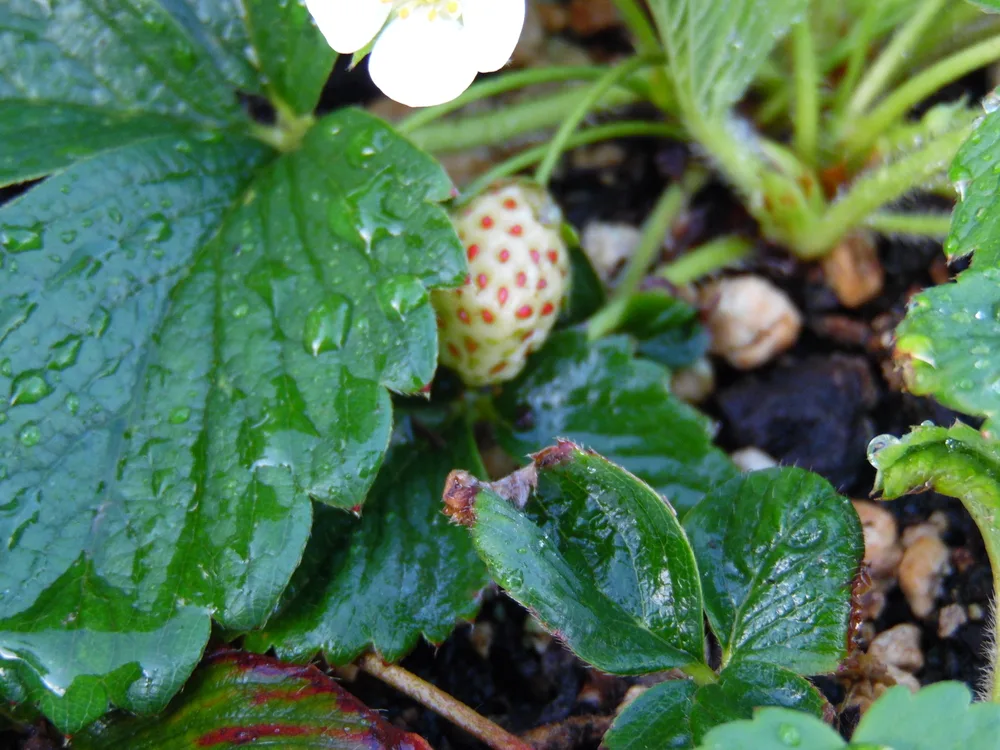
Because they are brothers from the same mother, pineberries have very similar cultural requirements as strawberries.
If you already grow strawberries, make some room in your patch for a few pineberry plants. White strawberries will be much more productive with at least one or two scarlets nearby.
Hardiness
Pineberries are hardy in USDA zones 4 to 8.
Light requirements
Plant pineberries in a spot that receives at least 8 hours of sunlight per day.
Soil
Pineberry plants need good drainage and will grow best in sandy to loamy soils that have been enriched with organic matter. Amend clay-heavy soils with compost to boost drainage and fertility.
Watering
Keep the soil moist – pineberries should have the equivalent of 1 to 1.5 inches of water each week.
When irrigating pineberries, always water the soil around plants to avoid wetting the foliage.
Fertilizer
Apply compost or compost tea to boost growth.
When pineberries begin to fruit, switch to a high phosphorus fertilizer, like bone meal.
Mulch
Like strawberries, pineberries will appreciate a thin layer of mulch – straw, grass clippings, or wood chips – during the growing season. Mulching helps conserve moisture in the soil and keep berries clean and off the dirt.
In late fall, when temperatures are around 20°F (-6°C), apply a thicker layer of mulch but keep it loose. Add just enough to almost completely cover the tops of plants. Winter mulching will help prevent plants from being heaved out of the bed during freeze and thaw cycles in spring.
Pollination
Since pineberry breeding began in the early aughts, about a half dozen pineberry varieties have been developed. Some cultivars, like the “Wonderful Pineberry”, are everbearing and self-fertile, while others like “Natural Albino” need another June-bearing strawberry to cross pollinate with.
Regardless of whether the pineberry variety is self-pollinating or not, it’s a good idea to grow two or more strawberry varieties (with the same bloom times) to boost your overall yields.
Where to Buy Pineberry Plants
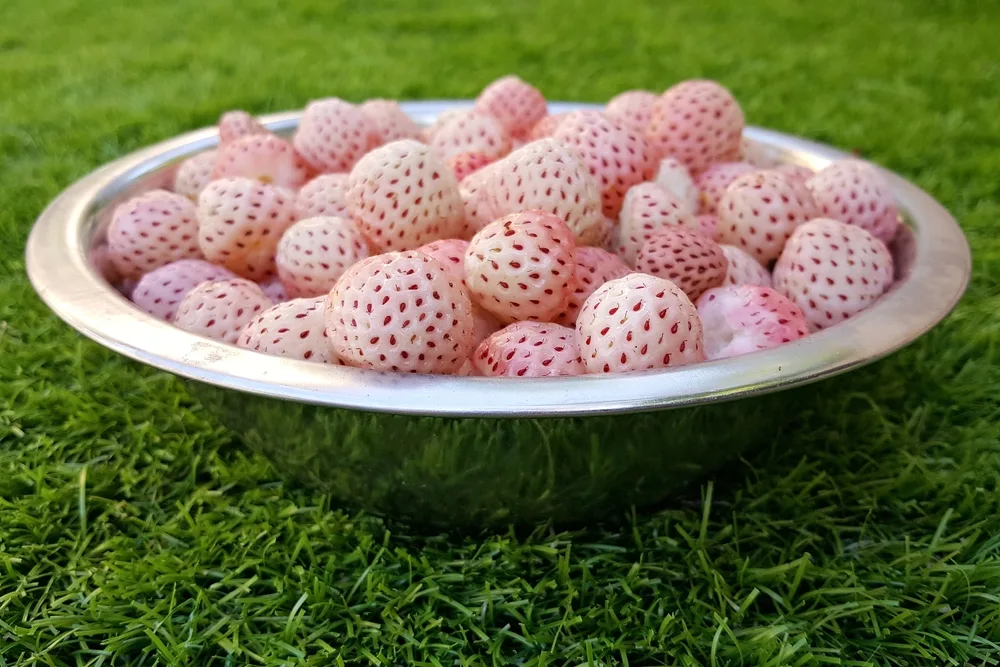
As of now, pineberry seeds won’t reliably grow true-to-type. If you purchase or collect pineberry seeds, odds are you will end up with a red strawberries at harvest time.
To ensure you get white strawberry cultivars, you can buy bare root crowns and starter plants in pots online:
How to Grow Pineberries
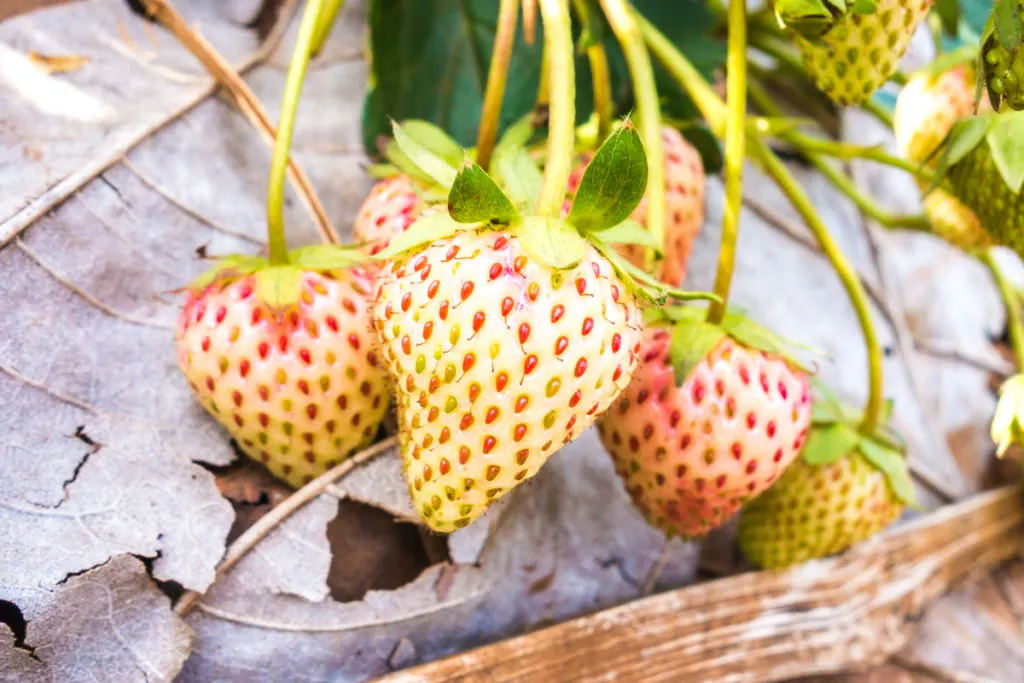
Pineberries will grow just as well in container gardens as they do in the open ground. If you’re short on space, try growing pineberries in hanging baskets, stacked pots, or any of these other amazing strawberry planting ideas.
Pineberries can be planted out as soon as the soil can be worked in spring:
- Amend your growing site with plenty of compost.
- If you purchased bare root plants, it’s important to plant at the correct depth and not bury the crown. The root system should be completely covered with soil but the green stems should be fully above ground.
- If you bought potted starter plants, dig a hole a little larger than the container. Place the plant inside the hole and maintain the same soil depth as the container it came in.
- Pineberries typically grow 8 to 12 inches in height and spread out 10 to 18 inches wide. Give them room to sprawl by planting them 18 to 24 inches apart.
- As soon as pineberry plants are snug in the soil, apply mulch and water the site thoroughly.
How to Harvest Pineberries
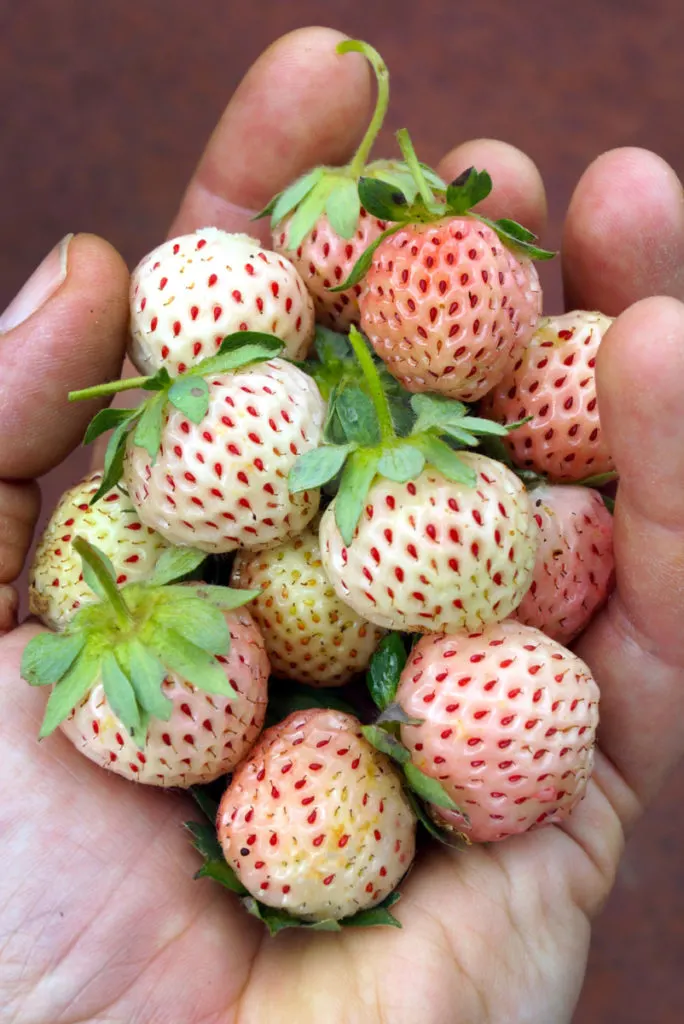
Although pineberries can be harvested from in their first year, some growers prefer to wait until the second year to harvest the berries. By pinching off flowers during the first season, the plant will put all its energy toward root growth and runners.
Pineberries are ripe and ready for picking when the tiny seeds that cover the fruit change color from green to red. The berries may be a milky white, but the ripest ones will have a pinkish tinge.
Be careful when pulling pineberries off the plant. The fruit is quite fragile – handle them like you would eggs.
Pineberry Recipes
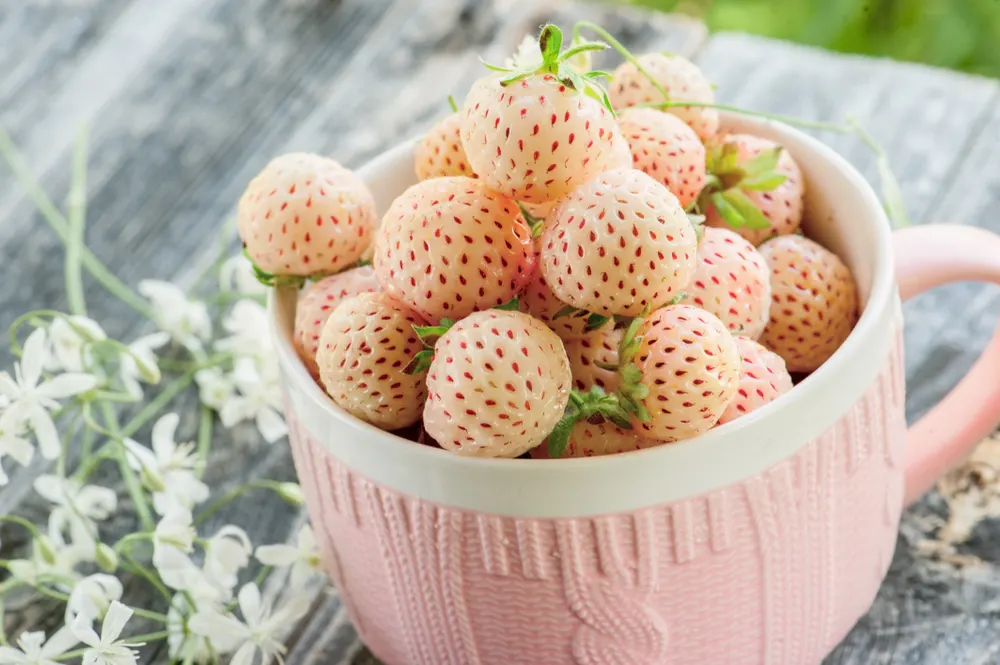
Pineberries are essentially strawberries, but with a tropical twist.
Feel free to adapt them to your favorite strawberry recipes – jams, pies, smoothies, fresh salads, and such – and add a bit of drama and brightness to your plate.
Whip up a Pineberry Cloud Tart to really show off these beautiful berries.
Or combine them with blueberries and strawberries to make Dutch Delight Muffins – the ultimate berry muffin trifecta.
How to Propagate Pineberry
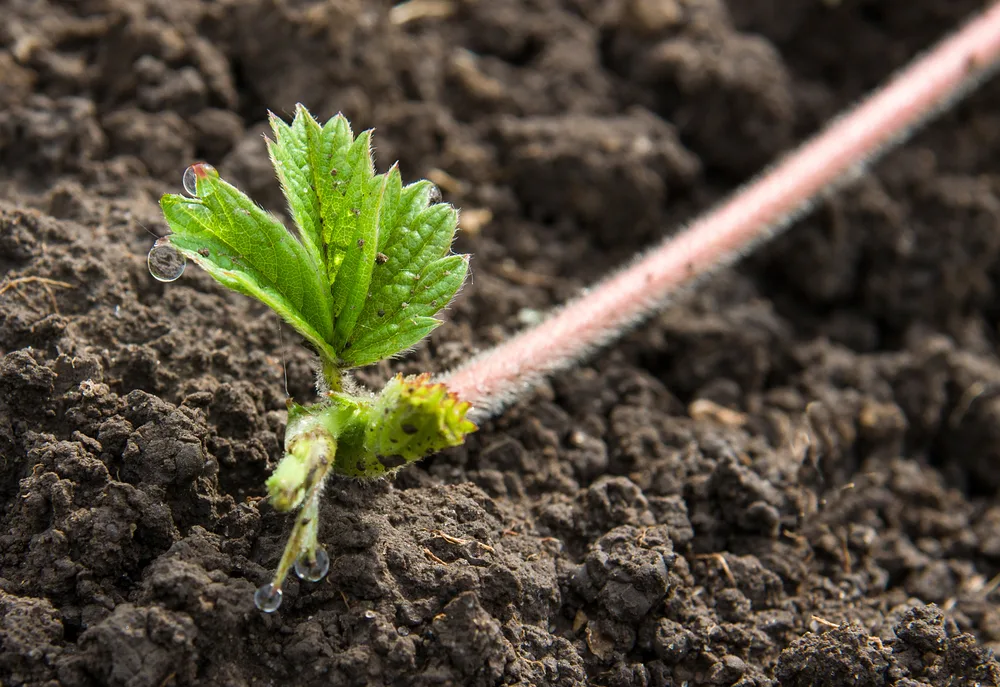
A single pineberry plant will send out lots of runners throughout the growing season, so it’s really easy to multiply your collection.
It’s the same procedure as propagating strawberries from runners – train them where you want them to grow or snip them off the parent plant and nestle the baby crowns into the soil.
Common Issues:
All strawberry cultivars – including pineberries – are susceptible to a number of diseases and pests.
Leaf spot, leaf scorch, and powdery mildew are some of the most common foliar diseases to attack pineberries. Always plant pineberries in full sun, keep water off the leaves by irrigating from below, and provide good air circulation around plants.
Root rots such as black root rot and red stele can be caused by any combination of fertilizer burn, drought, overwatering, and poorly drained, clay soils.
Leather rot and anthracnose are some of the fungal diseases that can attack the fruit. Keep the berries dry and off the soil by mulching around plants.
Aphids, slugs, loopers, weevils, and thrips are the main pests of pineberries. Rewild your garden to restore balance and encourage their natural enemies to frequent your lands.

Get the famous Rural Sprout newsletter delivered to your inbox.
Including Sunday musings from our editor, Tracey, as well as “What’s Up Wednesday” our roundup of what’s in season and new article updates and alerts.

